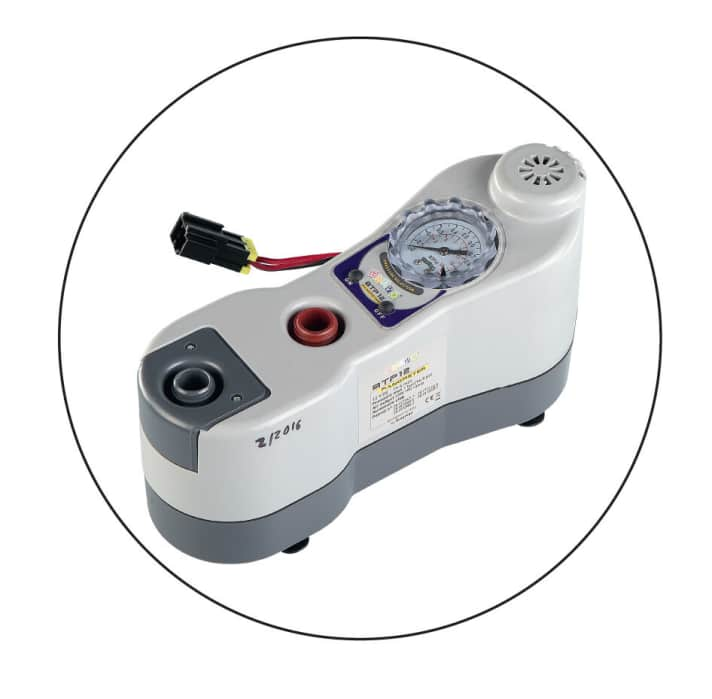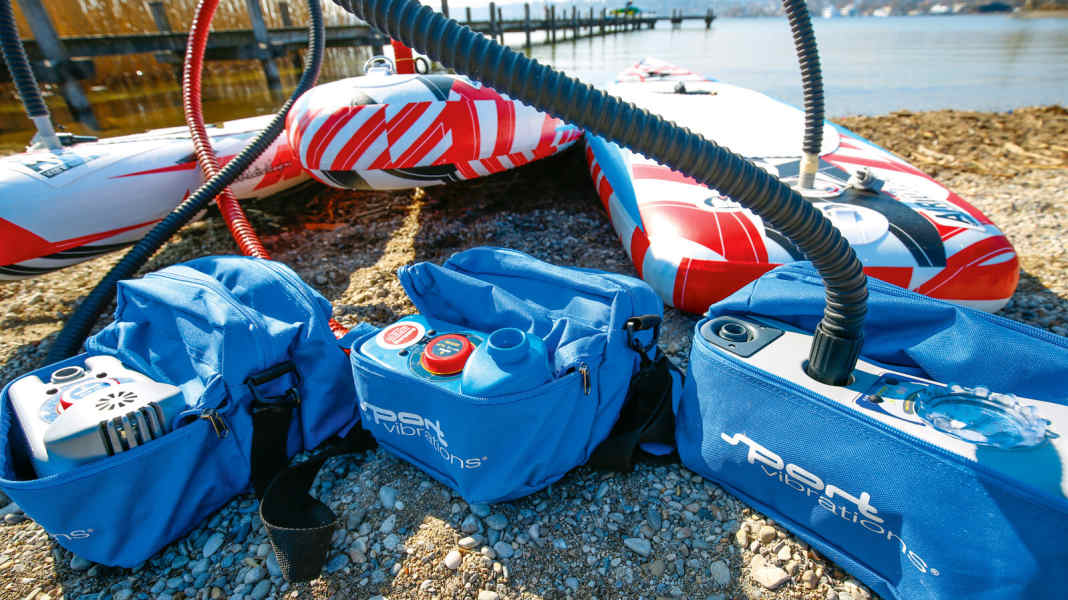

Nothing works without pressure - at least not with modern iSUPs. All high-quality boards can withstand at least 14 to 15 psi, which is about one bar of overpressure. Some SUP experts even go well beyond this. Etienne Stander, SUP salesman in Munich, is never satisfied with 15 psi. "I always pump my boards to around 17, 18 psi. If I go on the river, then over 20." The man obviously has confidence in the products he sells. But confidence isn't everything, a petite person has to pump the pressure into a board first. Our colleague Carol Scheunemann has the power for 15-kilometre paddle races, but she is simply too light to pump 18 psi into a race inflatable. And not everyone always has a strong man at hand to lean on the pump.
Electric pumps are tempting and certainly helpful and sensible when used sensibly. During the board tests, we pumped all boards to a standardised 15 psi - exclusively electric. Whether SUP hearing loss can be classed as an occupational disease remains to be seen, but the electric parts make quite a racket. Just pumping up a few boards on the beach - that takes what feels like a very long time and doesn't make any new friends. But you can at least consider whether you actually need the battery or would rather get your boards into shape using the car battery in the car park. When inflated, the boards are often easier to carry and you don't have to take a rucksack and pump with you.
Lead-acid or nickel-metal hydride batteries cannot be compared with mobile phone batteries, which can simply be left empty for a few weeks or left on the charger for two days without being damaged. This type of battery needs to be looked after if you want to enjoy it for several seasons. "If possible, you should not discharge such batteries by more than 60 per cent and then charge them again soon," advises electrical engineer Daniel Martschin, "otherwise you will lose storage capacity and the number of possible charging cycles will also be reduced if you treat them badly." Both battery types do not like to be overcharged, so you should follow the charging instructions. NiMh batteries also do not like temperatures below zero. The batteries are also only moderately protected against "bad handling" during transport. Presumably as a result of a short circuit in the wiring (possibly due to transport damage or improper soldering), a Ni/Mh battery ignited a small fire in the living room.
Our test conclusion nevertheless:The little electric helper does the hard work for you, which is both tedious and not particularly suitable as a warm-up exercise. Having a small electric compressor with you is a great thing. Does it have to be with a battery? If you're the type who likes to take care of it, maybe. We found the car battery option particularly charming - certainly also because there were never fewer than four or five boards in the queue.
If you want to make manual labour easier at a reasonable price, the simple blowers for the cigarette lighter are an inexpensive helper that will do at least the first part of the work without complaint and at an acceptable volume. Some brands use different pumps for the hand pumps supplied - depending on the board model. Some of the hand pumps still differ significantly this season. It is therefore worth checking which of the four different models is actually included in the scope of delivery before buying.

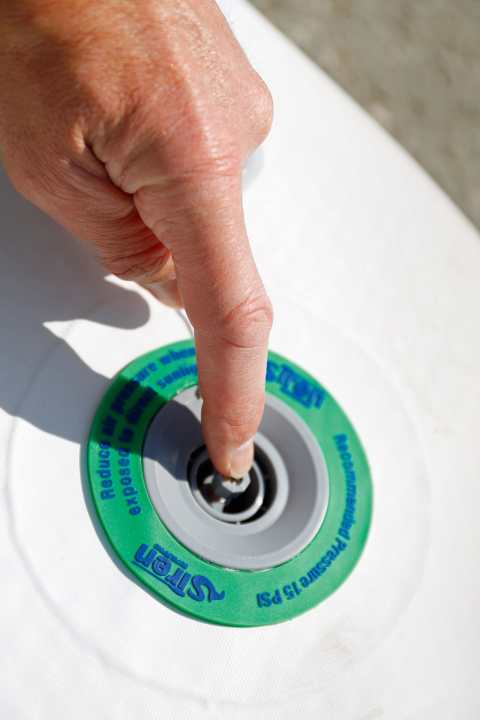
...
SMALL POWER STATIONS: E-PUMPS
Cheap air from the discounter
There's no quicker way to inflate a board. Without real pressure - the fixed fan can't do that - but at least to the point where the board keeps its shape and can be transported to the beach using the carrying handle. Air beds, water toys and other items from DIY stores or food discounters are the actual area of application. The price is between 10 and 25 euros, depending on what is on offer, and the power comes directly from the cigarette lighter. Handling is easy: push in the valve ("open") and press the small blower directly onto the hole. After 30 seconds, a 12'6" board is filled with 250 litres of air; with the hand pump, that would be two minutes of brisk continuous operation. With a little practice, you can quickly close the valve before the air is out again.

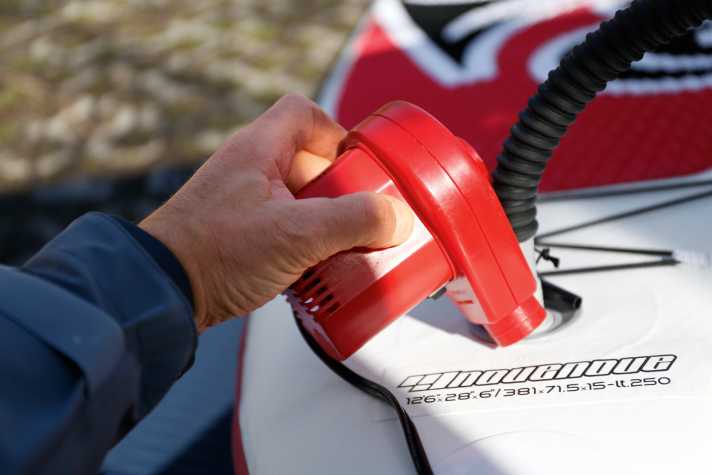
With high pressure
Most of the compressors offered in SUP accessories come from the manufacturer Bravo, which also produces all of the hand pumps presented here. These then end up in SUP shops in practical bags from various suppliers. Three pump models and two different batteries can be combined in a variety of ways. We tested the Sport Vibrations compressor pump up to 15 psi (1) for €219, the compressor pump up to 22 psi (2) for €239 and the turbine pump (3) for €269. The turbine pump combines a blower for fast pre-filling with a compressor. From a certain pressure, it automatically switches over internally. The prices include the lead-acid battery (blue). With the significantly lighter Ni/Mh battery (white), the pumps cost 100 euros more each (sport-vibrations.com). All pumps are supplied as standard with a cable for connection to the car battery terminals, so you can inflate boards - until the ADAC arrives.

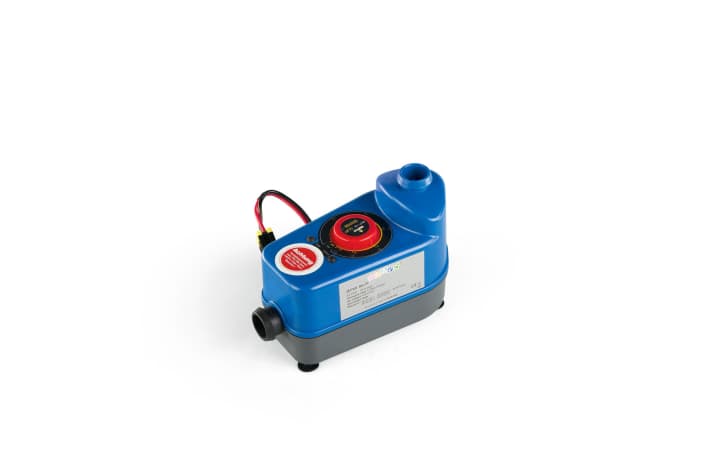

...
THE HAND PUMPS
TOP MODEL
This pump is switched with a large lever. Initially, the pump works when pushing and pulling. As soon as it gets heavier, after switching over, it only works in the pressure phase. The base is particularly large and ensures a secure hold, with the option of suction.
CONCLUSION Only Starboard has this top model in its programme. With a removable footplate, the pump is easy to stow away.
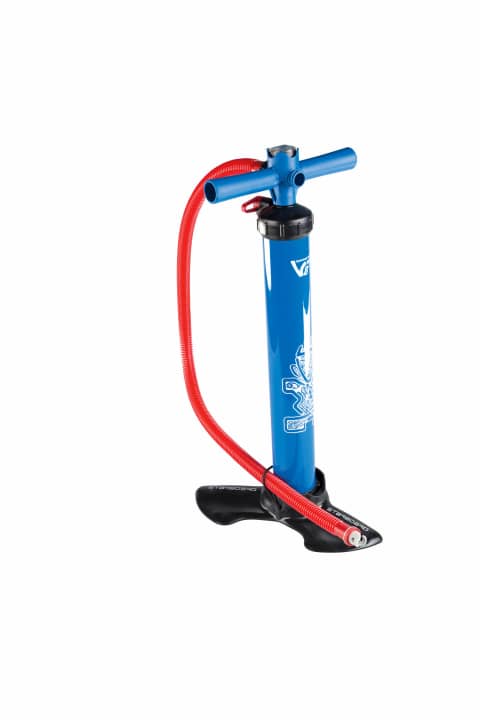
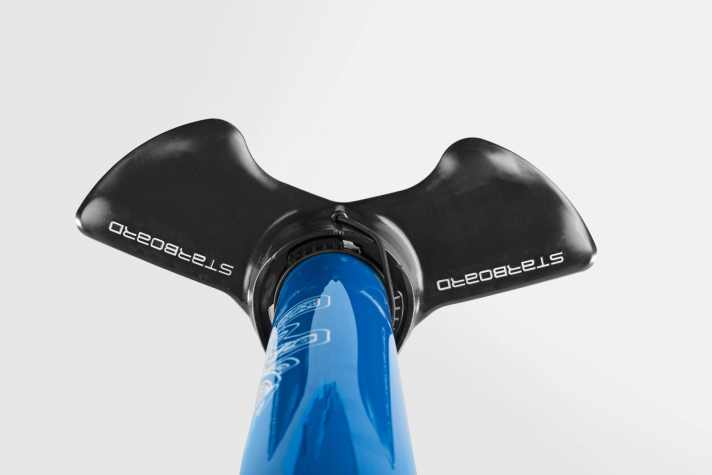
LESS IS NOT POSSIBLE
The simplest model only works on pressure, so twice as many strokes are required in the first pumping phase. The handle is shorter and a little tight for large hands. The pressure gauge is not protected in the handle and the footrest is also quite small.
CONCLUSION The economy model is still offered by some manufacturers on individual models. Seen at Naish, JP, NoveNove, Mistral, Quatro.
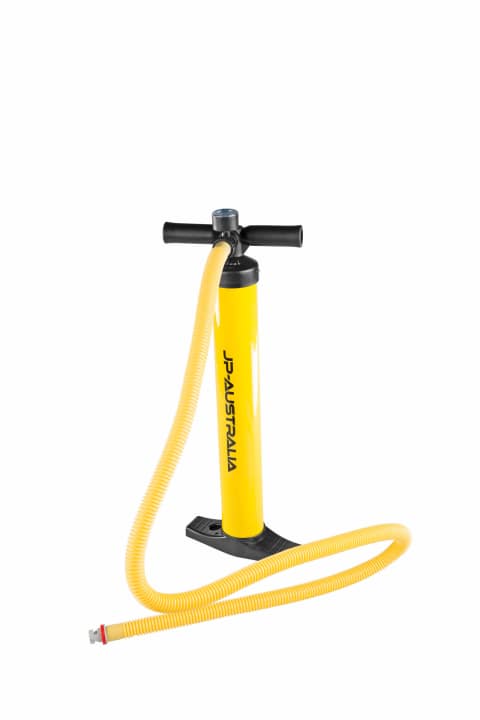

GOOD STANDARD
Good pump with ergonomic handle and the option to switch between pumping only when pushing or alternatively when pushing and pulling. The pump can be easily fixed in place with the V-shaped support leg. Does not have a suction outlet - but you don't need one.
CONCLUSION The handle is ergonomic and practical in the hand, the pump looks well thought out. Spotted at Fanatic and Bic.


STANDARD
Switching from "double action" to "single action" is realised with a small plug. The handles are longer than on the simplest model, only the rather small base is from this first generation of pumps. A "deflate" (suction) function is also provided here.
CONCLUSION The pump is practical with a pressure/pull switch and wide handles. Supplied by Siren, JP, Focus, Bic and SUP-Monsters.
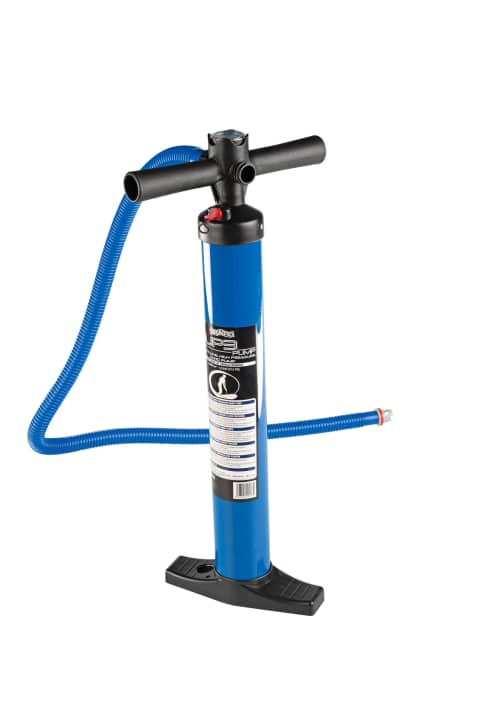
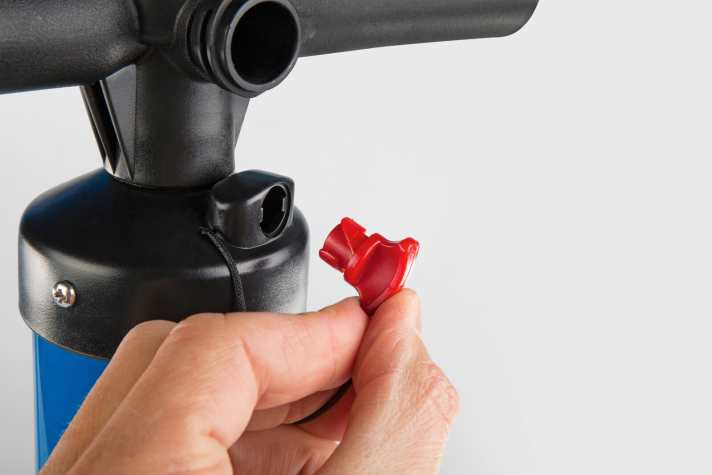
...
JUST NO EMPTY STROKE
From pure manual operation to the two-stage electric station, there are many ways to get a full board. We compared action and time in all variants on an RRD Aircruiser 12'0''.
DISCOUNTER PUMP + HAND PUMP
Compared to manual operation, you save the complete filling of the board, i.e. 190 strokes (counting up and down as 2 actions). The blower requires power from the cigarette lighter and 28 seconds. You still have 250 pumping actions and just under three and a half minutes to warm up before you reach the target of 15 psi.
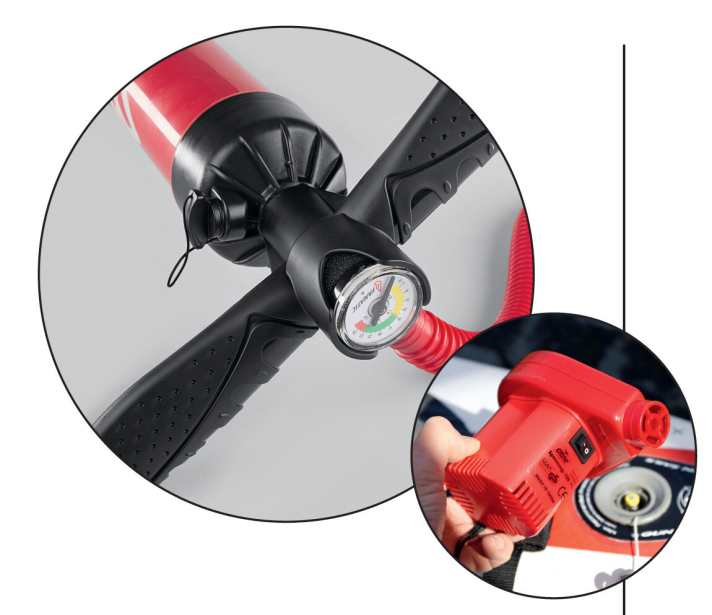
DISCOUNTER PUMP + COMPRESSOR
This is actually a pointless combination, unless you have several boards to inflate and are working with both parts at the same time. The whole process takes 3:57 minutes. Compared to using the compressor alone, you only gain one minute - not including the additional action.
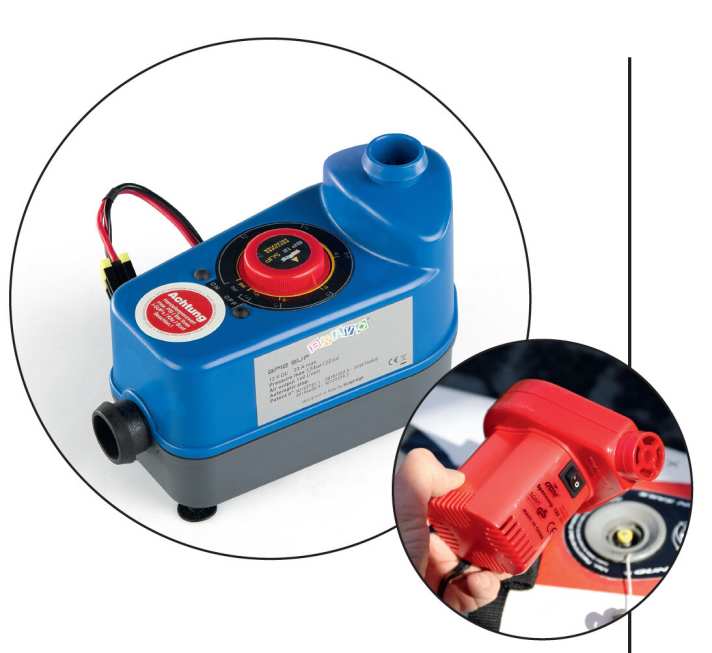
PUMPED COMPLETELY BY HAND
In his most athletic form, pump dummy Julian had just about filled the board after two minutes and 190 pump strokes. A further 250 strokes and 3:21 minutes later, 15 psi appeared on the pressure gauge. A total of 5:21. Without a break, a sporty performance. If you don't see pumping as a competition, you can add another half the time.
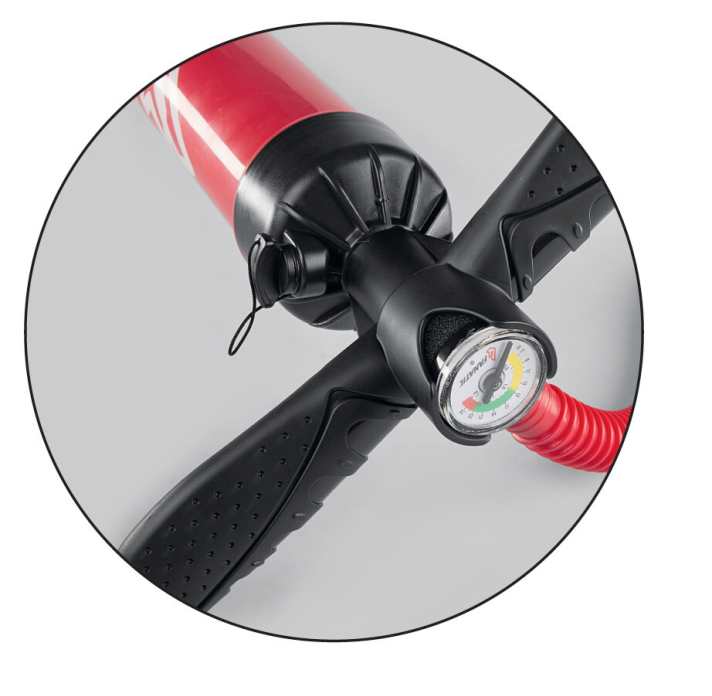
COMPRESSOR
In 4:40 minutes, the board, pumped up to 15 psi, is ready to go. A practical alternative if you don't like the hand pump. The small compressor is quite handy, especially without the heavy battery. During the test, the pump was connected to the car battery, which ensures full voltage until the end and also works very well for several boards.
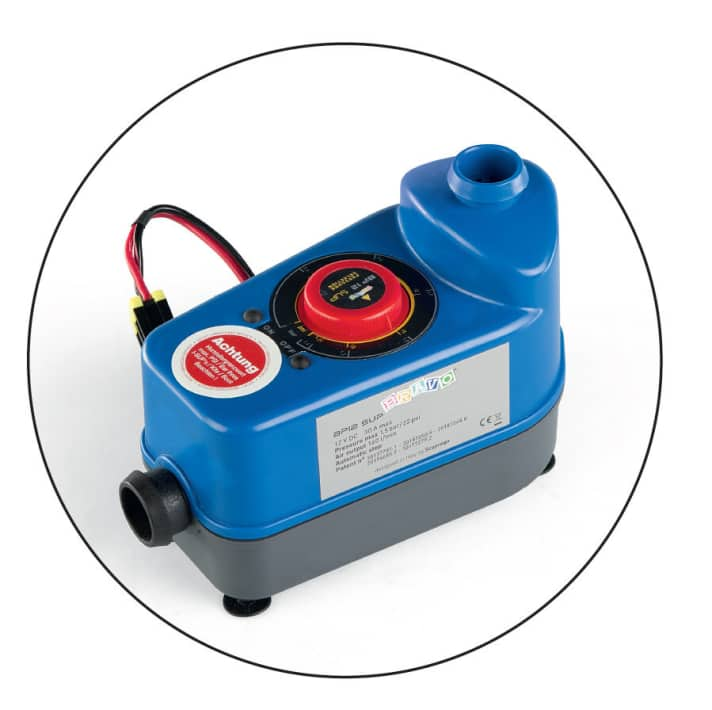
TURBINE PUMP
The turbine pump did not manage the same time on the batteries as its smaller sister model on the car battery. A time of 5:42 minutes is to be expected. The blue lead battery lasts for two large boards, the more expensive Ni/Mh battery managed three and a half. After that, charging cycles of five hours are due and the battery must be disconnected from the mains at the end of the charging time.
